The flight was terrible, as they always are these days, and departure was delayed over an hour, but it was all forgotten upon landing. (Okay, upon getting through security.) Sun and blue sky and Father Tiber welcomed me in their warm embrace and I hit the streets as soon as I dropped my crap off at the hotel. A quick jaunt to St. Peter’s where I hoped to catch the Pope canonizing some saintly types but alas, didn’t quite make it on time. That’s cool, though. I got to hear the Vatican band play the Italian national anthem and enjoyed the jaw-dropping view of how freaking clean the colonnade and facade of the basilica are. It never once looked anything near that ideal off-white when I lived there. And the fountains in St. Peter’s Square! In my day, whatever parts weren’t black as coal on them were coated in green algae slime. Not anymore. All that gunk has been replaced by pure travertine creaminess.
Follow in my footsteps.
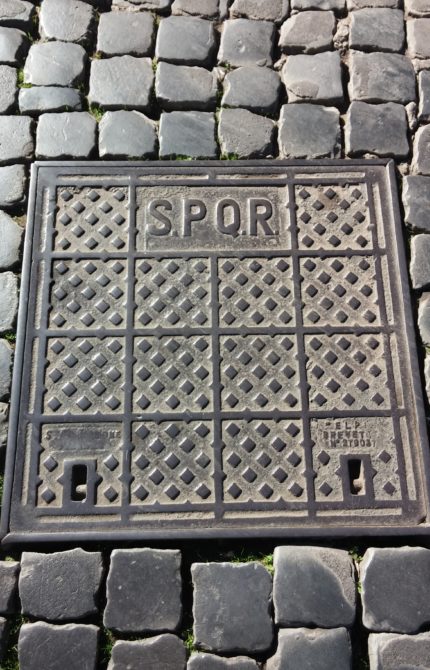
Sono Pazzi Questi Romani manhole cover with original sampietrini basalt pavers. Murder on the shoes and just plain murder when they’re wet, but they are so quintessentially Rome. They’re gradually replaced with terrible modern replacements everywhere except on small streets and in the historic center to preserve its character.
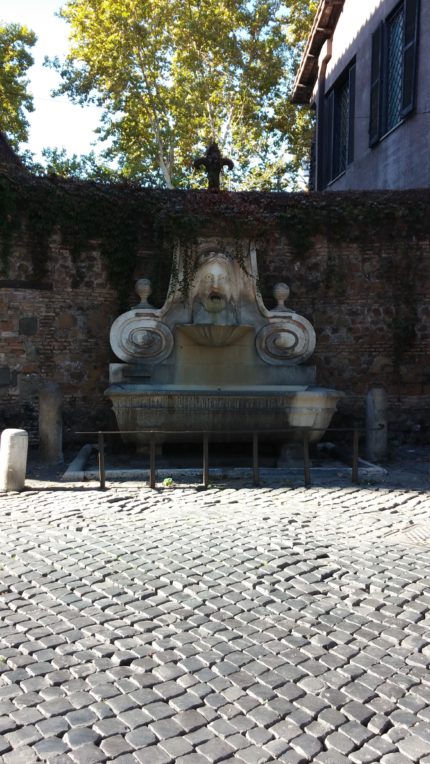
Just a charming little fountain at the end of a street near the Tiber. It’s drooling more than fountaining these days on account of water restrictions.
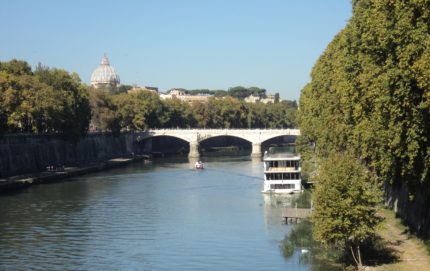
I crossed the Tiber on the Ponte Sisto and saw this in the distance. Makes it easy not to get lost even after so much time has passed.
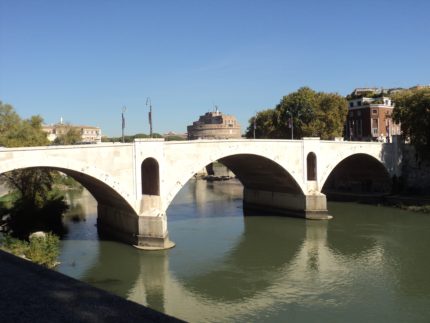
I didn’t cross over to see the Castel Sant’Angelo up close and personal due to my hustling to get to St. Pete’s. Maybe I’ll go back to see it lit up tonight.
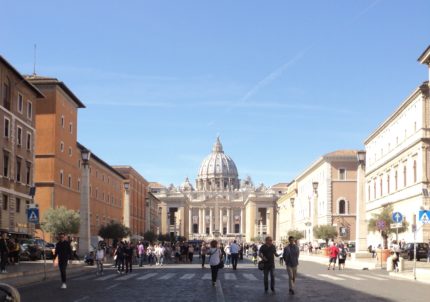
Almost there!
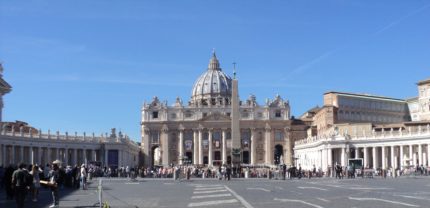
And here we are. So bright and creamy in the sunlight. The banners you see hanging from the church balcony celebrate the new saints, Capuchin friar Angelo d’Acri (d. 1739); Manuel Míguez González, founder of the Daughters of the Divine Shepherdess (d. 1925); the 30 “Matryrs of Natal” who were killed by Dutch troops and their local allies under the direction of radical Calvinist Antonio Paraopaba in Natal, Brazil, in 1645; and the “Child Martyrs of Tlaxcala,” three indigenous Mexican 12- and 13-year-olds who were killed in the late 1520s (the Franciscan advance guard evangelizers only got there in 1524) for refusing to renounce their Catholicism.
That’s 35 saints made in one fell swoop! And I was there! (In time to hear the band wrap it up and watch the guys on the dais parade out solemly.)